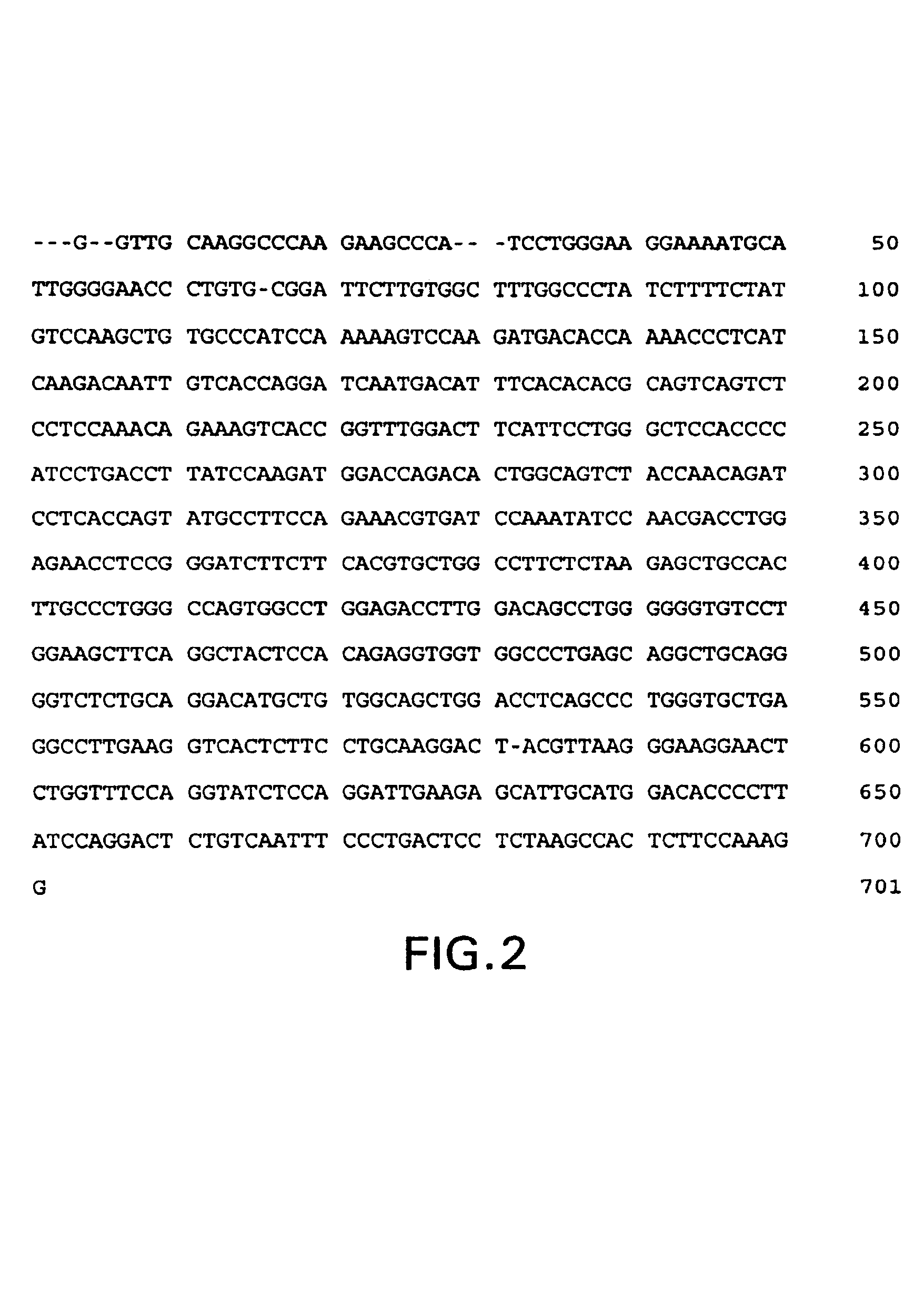OB polypeptides, modified forms and derivatives
a technology of polypeptides and modified forms, applied in the field of mammals' control of body weight, can solve the problems of affecting the ability to properly integrate or respond to nutritional information within the central nervous system, the molecular genetic basis of these metabolically related disorders is important, and the general population's genes responsible for obesity have not been genetically mapped. achieve the effects of reducing obesity, reducing or controlling excessive body fat, and modulating the body weight of a mammal
- Summary
- Abstract
- Description
- Claims
- Application Information
AI Technical Summary
Benefits of technology
Problems solved by technology
Method used
Image
Examples
example
A High Dose of Ob Affects Wild-Type Mice
[0487]Wild type mice (C57Bl16J + / λ) were treated with 10 μg / g / day i.p. of recombinant murine ob, and body mass measured every four days. The results are shown in Table 6.
[0488]
TABLE 6Body mass of normal mice receiving obTreatmentDay 0Day 4Day 8Day 12Day 16saline22 g22 g22.5 g23 g22.5 gmurine ob2220.520.720.821.8
[0489]These data demonstrate that ob affects the body mass of wild-type as well as obese (ob / ob) mice, albeit to a much smaller degree.
PUM
| Property | Measurement | Unit |
|---|---|---|
| weight | aaaaa | aaaaa |
| weight | aaaaa | aaaaa |
| molecular mass | aaaaa | aaaaa |
Abstract
Description
Claims
Application Information
 Login to View More
Login to View More - R&D
- Intellectual Property
- Life Sciences
- Materials
- Tech Scout
- Unparalleled Data Quality
- Higher Quality Content
- 60% Fewer Hallucinations
Browse by: Latest US Patents, China's latest patents, Technical Efficacy Thesaurus, Application Domain, Technology Topic, Popular Technical Reports.
© 2025 PatSnap. All rights reserved.Legal|Privacy policy|Modern Slavery Act Transparency Statement|Sitemap|About US| Contact US: help@patsnap.com



